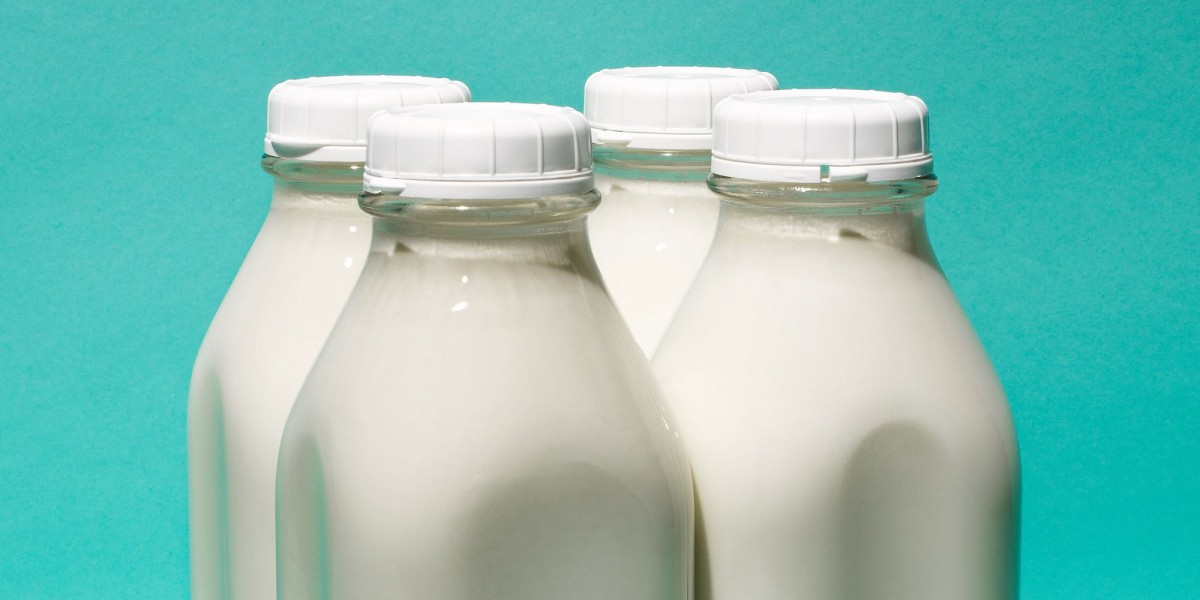
The U.S. Department of Agriculture secretary, Sonny Perdue, raised a glass of chocolate milk to dairy lobbyists in an unannounced visit to their board of directors’ meeting in October, as the group celebrated a recent trade win.
The Trump administration’s NAFTA negotiations gave American dairy farmers more access to the Canadian market, allowing them to export an addition 50,000 metric tons of milk northward.
Just two months later, Perdue would finalize a rule allowing fattier chocolate and strawberry flavored milks to be sold to roughly 31 million kids in school cafeterias.
“He grabbed a glass of chocolate milk, and made a chocolate milk toast to our CEO and our board,” Cary Frye, the senior vice-president of regulatory affairs at the International Dairy Foods Association (IDFA), told the Guardian.
Perdue’s chocolate milk salute to the dairy lobby was just one example of how the Trump administration has worked closely with the dairy industry, at a time when the president’s trade war has hurt farmers.
At the same time, Trump’s trade war with China and Mexico has cost American dairy farmers an estimated $1.5 billion in retaliatory tariffs. All the while, milk production has increased 13% over the last decade, even as sales have declined. In 2018 alone, sales dropped 6% compared with plant-based milks, which increased 9%, according to Nielsen data.
At the same time, a handful of heavyweight lobbyists were spending millions in support of the interests of milk, cheese and yogurt producers in the U.S. The IDFA spent $1.3 million lobbying on a variety of issues, including school milk, according to Senate lobbying disclosures.
It gave another $260,000 to candidates, two-thirds of whom were Republican, through its political action committee, according to the Center for Responsive Politics. The Dairy Farmers of America spent $924,000, including on school milk, according to CRP.
The same year, the Trump administration bought $50 million worth of milk in August to give to food banks and schools. In September, it announced $127 million in direct payments to dairy farmers. In October, American dairy farmers gained more access to the Canadian dairy market thanks to Trump’s renegotiation of NAFTA. Then, in December, the new school milk rules were finalized.
“For milk processors, this was really important. They saw milk sales were declining, they continued to decline in schools,” said Frye. Getting low-fat flavored milk back in schools, she said, was one of the “top five” issues for milk processors. “We were very pleased to see this change made.”
School nutrition rollbacks allowed schools to serve low-fat flavored milk (rather than only non-fat), as well as more refined grains, and delayed sodium restrictions. Even as the USDA approved the measure, much of the public appeared to oppose it. The federal rulemaking process requires agencies to seek public comment on new policies. More than 83,000 people commented to the USDA, and 96% of the respondents were against the reintroduction of flavored milk in schools.
“Feed high quality meals to kids including fruits, veggies and nutritious protein sources. Nix the sugar and processed foods laced with chemicals,” one anonymous commenter told the USDA. “If we want healthy, informed future citizens in this country let’s start by giving them quality meals in school so they can concentrate and absorb information.”
Nevertheless, in its final decision the agency wrote: “After careful consideration of all stakeholders’ comments, USDA believes that school nutrition operators have made the case that this final rule’s targeted regulatory flexibility is practical and necessary for efficient Program operation.”
In defense of the new rules, Perdue tweeted: “Nutritious school meals don’t do anyone any good if kids just throw them into the trash.” The USDA was “empowering local schools” to serve “healthy AND appetizing food” – an argument often made by the dairy industry.
In a survey conducted by the National Dairy Council, 73% of schools said students preferred 1% flavored milk to non-fat milk. Kids drank 288 million fewer half pints between 2012 and 2015, lobbyists said.
The milk standards are part of the federal government’s subsidized meal program, which feeds more than 31 million kids each day, many of whom get meals free or at reduced prices because their families are low-income. In some cases, meals at school account for half of the daily calories kids consume.
The battle to feed them, and what to feed them, has at once again pitted dairy lobbyists against nutritionists, in what has long been a politically fraught area entangled with lobbying.
In one of the most infamous examples, Congress ruled pizza could be considered a vegetable in school lunches after lobbying from the frozen food industry. Lobbyists for the prune industry also tried to convince the government to add prunes to hamburgers during surplus of the fruit in the early 2000s.
The rules, “as weak as they were, they were trying to make schools healthier,” said Susan Levin, director of nutrition for Physicians Committee for Responsible Medicine, a group which advocates for vegan diets. “It’s clear pandering to industry.”
Lobbyists for the milk industry fought hard against the Obama-era reforms, which restricted schools to selling only non-fat flavored milks and which the dairy industry blamed for a sharp decline in milk drinking.
In 2018 alone, the IDFA spent around $300,000 a quarter lobbying on issues including school lunches.
“Any government program is going to be a huge money maker for them and that includes schools,” said Levin. “That’s where a lot of excess surplus product is dumped, it’s dumped in schools, it’s dumped in prisons.”
Part of the dairy industry’s education strategy in recent years has been to market chocolate milk as a drink for athletes, and to “inoculate consumers against emerging trends.” The declining birthrate and “child vegans” were also identified as particular challenges for the milk industry, according to MilkPEP documents.
A nutritionist for the University of California called the idea that chocolate milk could help athletes “preposterous.”
“Milk is a very healthy beverage, it’s got protein, calcium, vitamin D – there’s a reason we are mammals and grow up drinking milk,” said Lorrene Ritchie, the director of the Nutrition Policy Institute at the University of California. “There’s nothing about adding chocolate to it that’s going to help an athlete.”
















